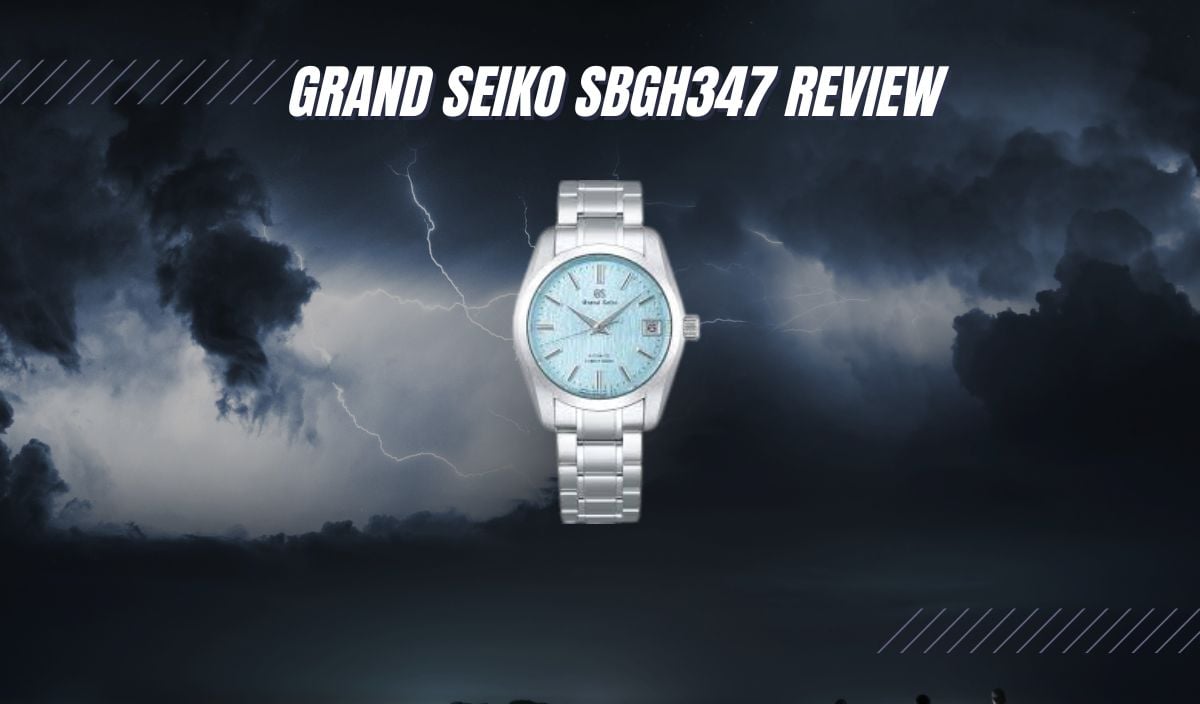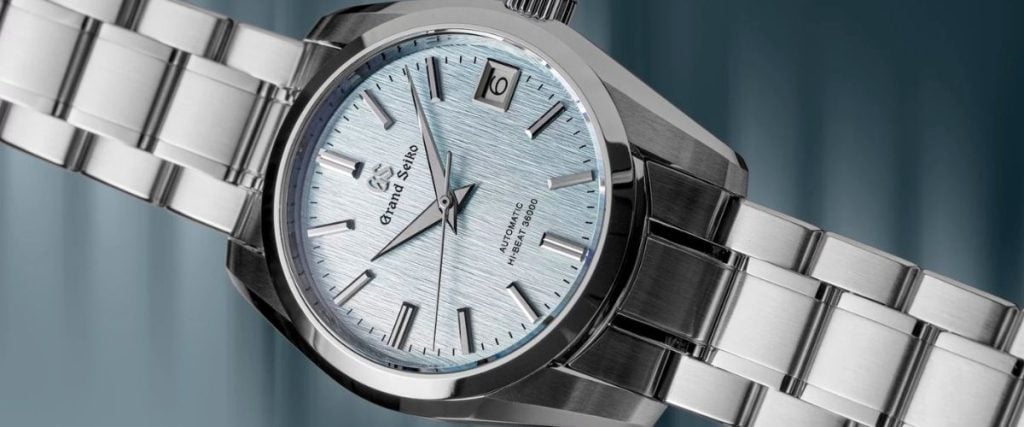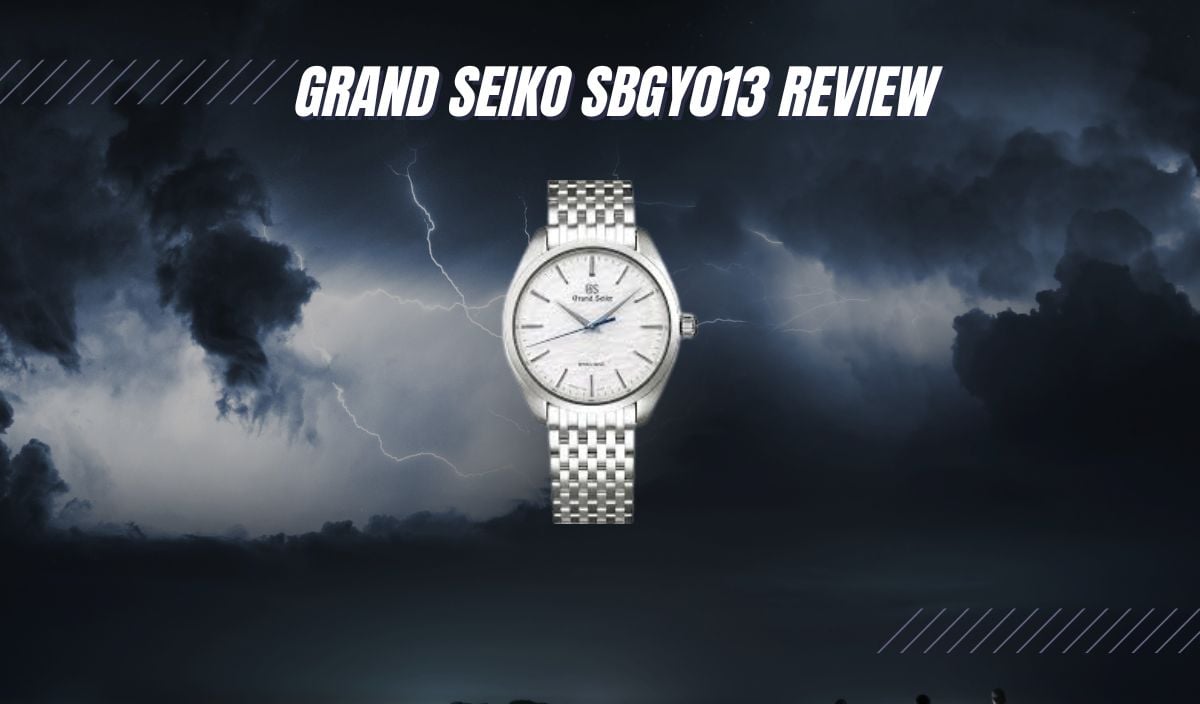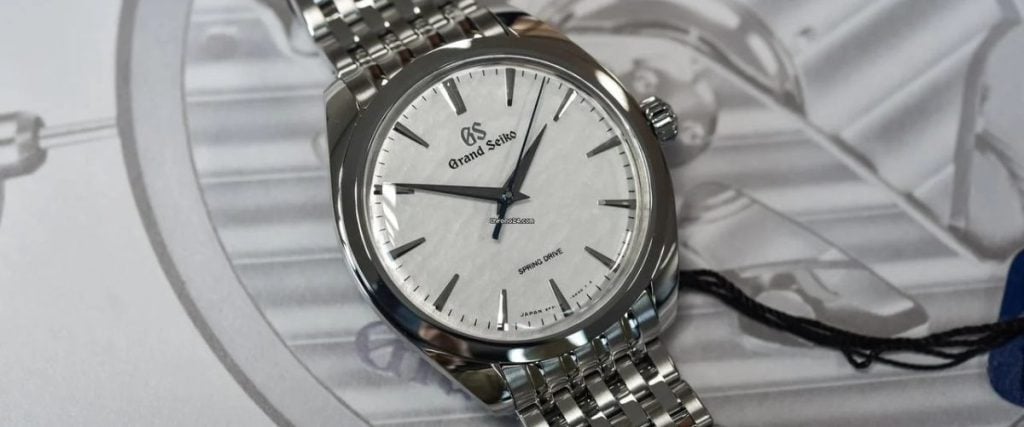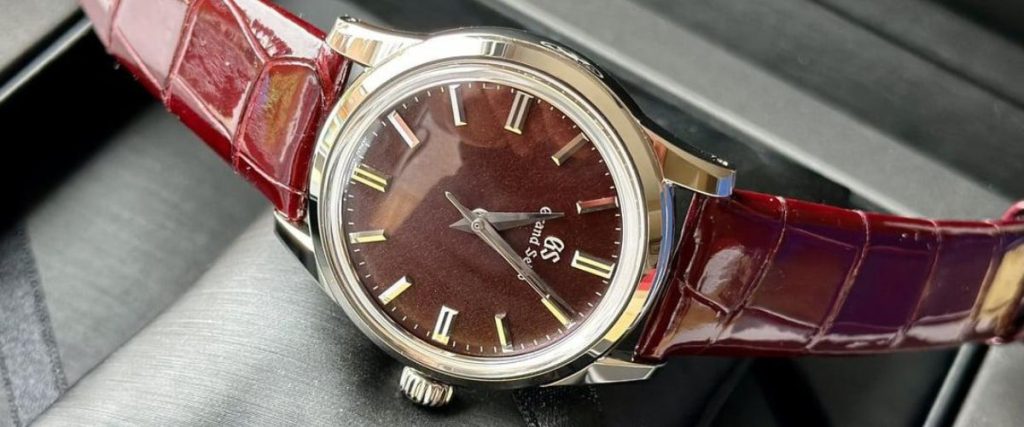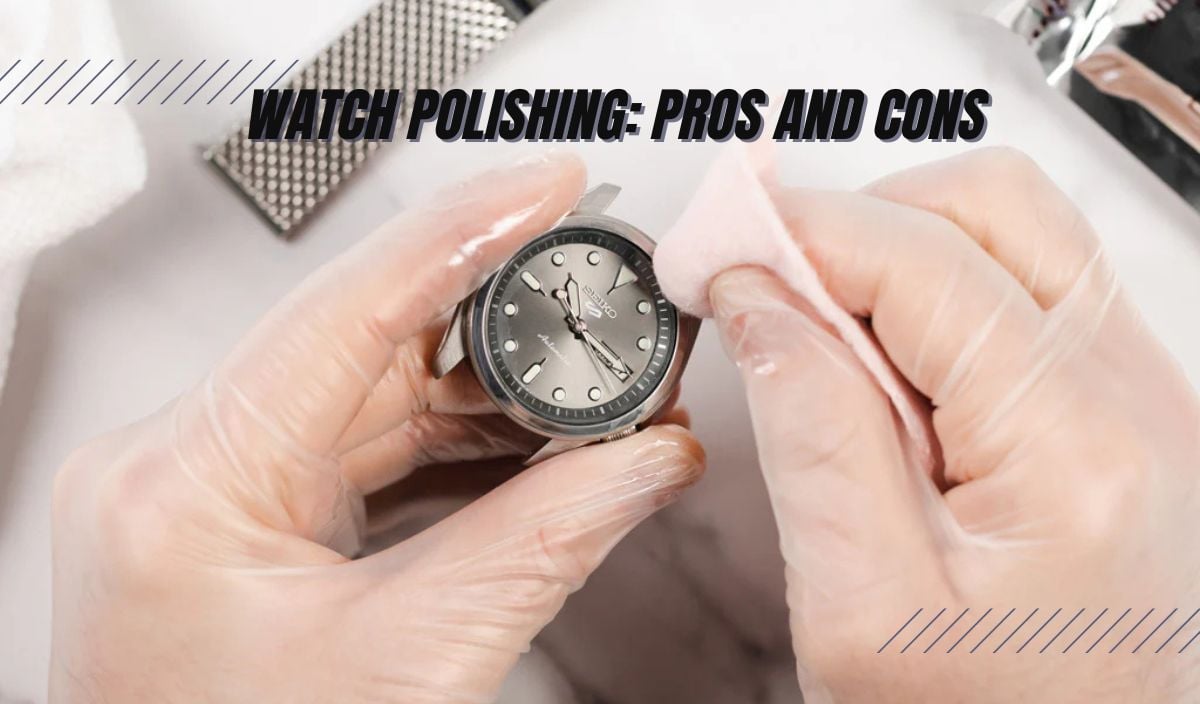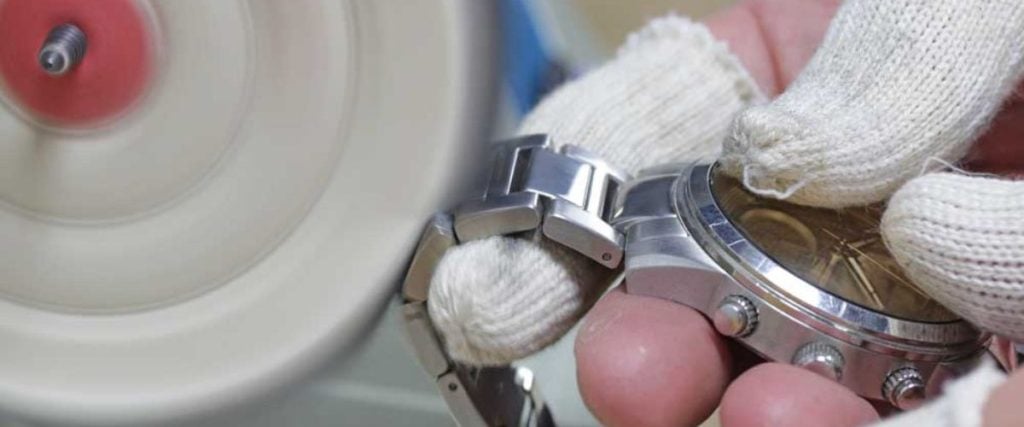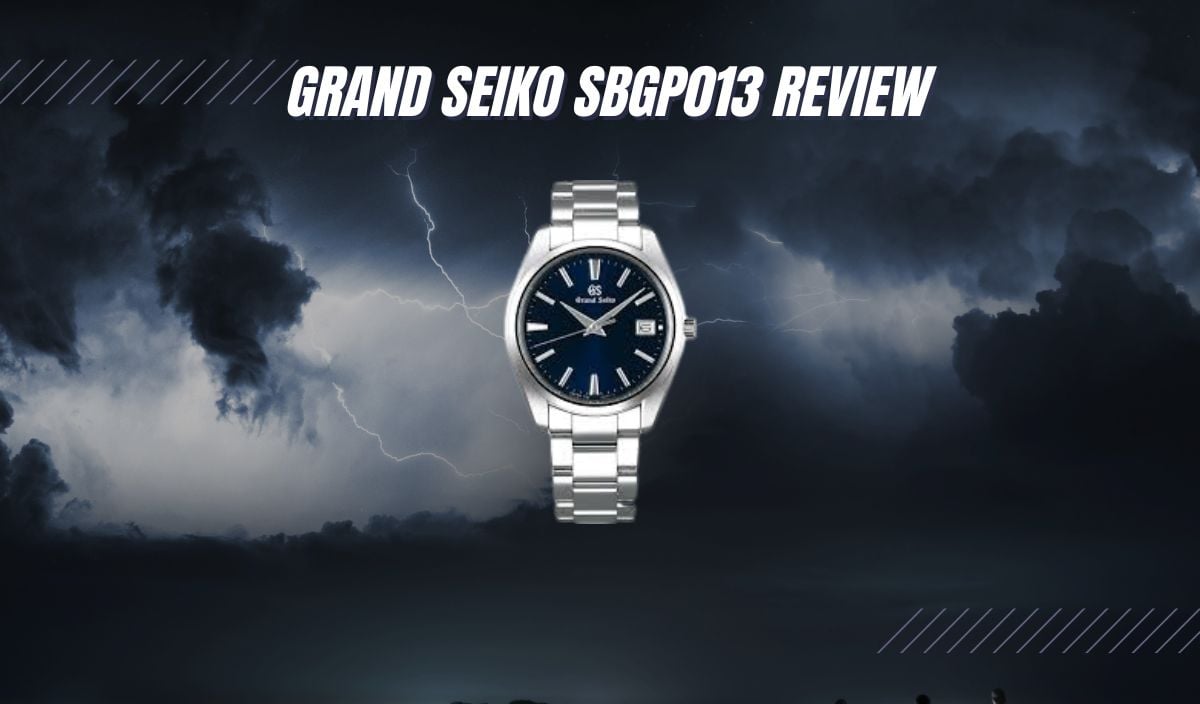
I’ve had the pleasure of reviewing a number of watches throughout my career, but if there’s one brand whose press photos almost never do their watches justice, it’s Grand Seiko. That’s not to say they are bad photographers or even bad at marketing; it’s simply that these watches have such incredible attention to detail and high levels of finishing that even the best cameras in the world can’t photograph their beauty.
There are a number of Grand Seiko watches I could use as an example for this point, but the model I had the joy of reviewing this week is the perfect example: the Grand Seiko Heritage Quartz SBGP013.
It’s a simple watch in many ways, especially for Grand Seiko. There’s no overly complicated texture or pattern on the dial, a classic – although highly accurate– quartz movement inside, and an easily wearable 40mm case made in commonly seen stainless steel. So how does a watch that sounds so regular on paper become one of the most beautiful entry-level watches I’ve ever seen?
The Grand Seiko Heritage Collection
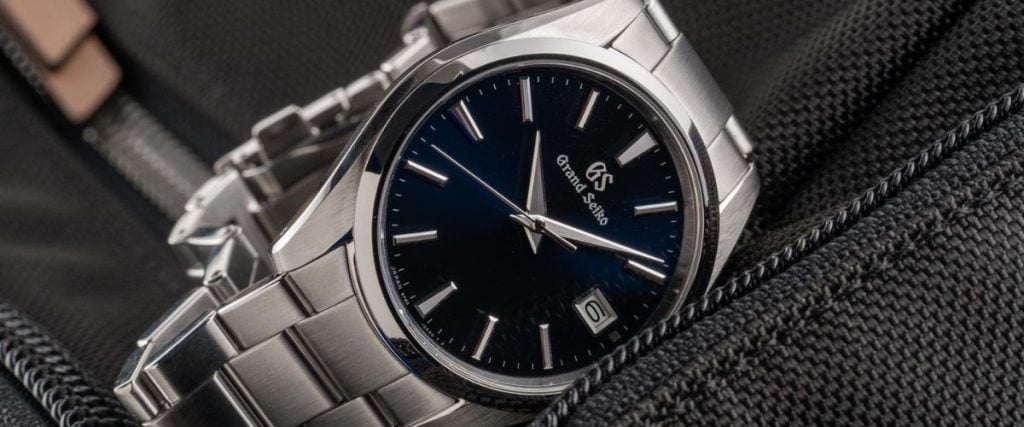
The Grand Seiko Heritage Quartz SBGP013 watch was first released in 2020, and added to the Japanese watchmaker’s Heritage collection. It joined two other models, also forming part of this entry-level family, including the cream-coloured SBGP009 and the black-dialed SBGP011.
At the time, these three models replaced the SBGV221 with a champagne dial and the SBGV223 with a black dial. Their biggest improvement was the movement change, with the updated Caliber 9F85 taking the place of the older Caliber 9F82.
The Grand Seiko Heritage Quartz SBGP013 watch and its two brothers that launched with it ticked all the boxes of the luxury watch manufacturer’s Heritage collection. Stylistically, they had classic silhouettes with predominantly polished cases, clear and easy-to-read dials, and fine attention to detail.
The Grand Seiko Heritage family is, for largely this reason, known for its classic appeal and is often a popular choice for collectors wanting the Grand Seiko name at an accessible price. Sure, there are watches in the collection powered by their more affluent Spring Drive and Hi-Beat movements, but those powered by their 9F quartz series are excellent for those seeking an entry-level timepiece. The Grand Seiko Heritage Quartz SBGP013 watch is one of the same.
A Super Slim Case
With a diameter of 40mm, a lug-to-lug measurement of 47mm, and a thickness of just 10.6mm, this watch might be up there as one of Grand Seiko’s most wearable models. It fits comfortably on the wrist and is especially low.
I know many of my fellow Grand Seiko lovers out there often have a hard time with some of their case sizes, especially the thickness. The Grand Seiko Heritage Quartz SBGP013 watch is an exception to the rule, however, sitting wonderfully low on the wrist, making it ideal for any of you who have a penchant for tight shirt cuffs. The low profile allows the watch to slide effortlessly under the sleeves, providing both elegance and practicality.
The dimensions help to set the Grand Seiko Heritage Quartz SBGP013 watch apart, too, for its versatility. Whether you have smaller wrists like mine—measuring just five inches—or larger wrists up to eight inches, this watch accommodates all. It strikes a balance between making a statement and offering a sleek, almost skin-like feel.
The case is entirely finished by hand using Grand Seiko’s signature Zaratsu polishing technique, which creates an exceptional mirror-like shine. Trained artisans carefully hold the stainless steel against a spinning tin plate, a technique that takes up to three years to learn. But hopefully, as you can tell, the result will be worth it.
It delivers a beautifully polished finish and a standard of craftsmanship that I believe is rare in the watch industry today, especially at this price point. In contrast to the polished surfaces, the Grand Seiko Heritage Quartz SBGP013 features some satin brushed elements on the lug tops and bracelet links, enhancing its visual appeal and adding depth to the overall design.
The Grand Seiko Heritage Quartz SBGP013 boasts an impressive 100 meters of water resistance, which is not often seen in dress watches like this. Grand Seiko ensures that most of their timepieces offer at least this level of protection, thanks to a securely closed and screw-down stainless steel case back and a reliable push-pull crown at the 3 o’clock position.
While an exhibition case back might have been a nice addition should there have been a mechanical movement placed inside, the engraved lion emblem in relief on the back is a worthy substitution that reflects the brand’s fierce and powerful identity. The crown itself is gently knurled and embossed with the Grand Seiko logo.
Lastly, the bezel features a conical shape that is smoothly polished using the same Zaratsu technique. This beautifully anchors the slightly domed sapphire crystal glass at the top, which is treated with an anti-reflective coating on the inner surface. This not only reduces glare but also lends the watch a subtle vintage charm, completing a well-rounded timepiece that is as functional as it is stylish.
A Classic Navy Blue Dial
Some dial colors are truly classic, and when it comes to timeless options, black, silver, and navy blue will always be at the top of the list. While I appreciate the recent trend toward brightly colored watch dials, there’s always a place for these classic hues that effortlessly complement any outfit or occasion. The deep navy blue dial of the Grand Seiko Heritage Quartz SBGP013 watch is the perfect example of this.
Its dark blue surface showcases a stunning sunburst decoration, creating a subtle shimmer that adds depth to the watch face. Depending on the lighting conditions, the shade of blue can change ever so slightly—one moment appearing as a rich royal blue and the next taking on an almost black appearance. This dynamic quality enhances the watch’s versatility, making it suitable for both casual and formal settings.
Like the case, the dial is completely hand-finished, which is truly remarkable for a watch at this price point. Every detail, from the hands to the hour markers and the date window, is meticulously crafted by skilled artisans using diamond-tipped milling tools.
These talented craftsmen specialize in creating tiny components all day, every day, ensuring that each piece is of the highest quality. The hour and minute hands are sharp and modern, while the seconds hand is slim and straightforward, making it almost unnoticeable as it glides around the dial.
Each hour marker is slightly faceted, reflecting light beautifully and enhancing the dial’s overall aesthetic. These markers elegantly match the hands with their own mix of polished and brushed finishes.
The only other hardware on the dial is the applied GS logo at 12 o’clock, accompanied by the Grand Seiko name printed directly beneath it, and the bordered date window at 3 o’clock, which features a black-on-white date disc, providing essential functionality without cluttering the face.
Notably, there’s no writing positioned at 6 o’clock, which is often the case with many watches. This design choice contributes to a clean, crisp finish that makes the dial feel uncluttered and sophisticated.
I do find myself wishing that the date disc here was finished in navy blue rather than white for added aesthetic appeal, but I can appreciate that the current design enhances legibility and still does not detract from the overall display. This is just me being picky.
A Caliber 9F Movement
The Grand Seiko Heritage Quartz SBGP013 is powered by the Caliber 9F85 quartz movement, which is widely regarded as one of the best quartz calibers on the market. This movement boasts incredible tolerances of +/- 10 seconds per year, a remarkable achievement in the realm of quartz technology.
In comparison, standard quartz movements typically have an accuracy rating of around +/- 15 seconds per year, making the 9F85 significantly more precise. This level of accuracy is attributed to several advanced features, including a quartz trimmer designed to adjust for drift in the quartz crystal over the years, ensuring that your watch remains as accurate as the day you bought it.
Another noteworthy characteristic of the Caliber 9F85 movement is its thermal compensation. This means that the movement is engineered to adjust for variations in temperature that can affect the accuracy of quartz watches.
Fluctuations in temperature can cause the quartz crystal to expand or contract, potentially leading to deviations in timekeeping. However, the thermal compensation feature in the 9F85 movement allows it to maintain exceptional accuracy even under varying environmental conditions.
The Grand Seiko Heritage Quartz SBGP013 watch’s movement offers another unique function known as an independent hour hand. Rather than employing a traditional quick-set date mechanism, the hour hand can be set independently. This feature is particularly advantageous for travelers, as it makes switching between different time zones a seamless process.
When you adjust the hour hand independently, the minute hand and seconds hand continue to operate unaffected, allowing you to easily set your watch to the local time without disrupting the timekeeping of the movement. It’s a thoughtful feature for those who like their watch to be exact to the second.
Finally, the Calibre 9F85 is a 9-jewel movement that has been meticulously designed, built, and regulated in-house by Grand Seiko. This commitment to quality and craftsmanship is evident in the movement’s performance and longevity. Plus, with an impressive battery life of 3 to 4 years, you can enjoy the convenience of a reliable timepiece without the hassle of frequent battery changes.
An Oyster-Like Bracelet
For its strap, the Grand Seiko Heritage Quartz SBGP013 opts for a full stainless steel bracelet. The three-row link architecture showcases staggered intermediate and differential link styles, reminiscent of the iconic Rolex Oyster, yet distinctly Grand Seiko in its execution.
The polished link ends catch the light beautifully, while the unique bevelling along the link edges adds a touch of sophistication, effectively separating the link tops from the sides with a rounded finish.
It’s clearly a strap largely designed for comfort and wearability, including removable links that are screw adjusted so you can easily make adjustments in your own home. There are also a couple of half links to help achieve that perfect size. However, it’s worth noting that there are no micro-adjustments available, which might limit immediate sizing options just slightly.
The single-fold steel deployment clasp features a twin-trigger release mechanism, requiring you to press both buttons simultaneously to open the bracelet. This added security feature ensures that your watch remains securely fastened to your wrist, providing peace of mind during daily wear. The clasp also boasts the Grand Seiko logo embossed in relief, serving as a subtle yet stylish reminder of the craftsmanship behind the piece.
With a 20mm lug width and drilled lugs, changing straps on this watch is a breeze. This feature allows you to easily swap out the stainless steel bracelet for a variety of straps, enabling you to customize the look of your watch to suit your style or occasion.
Given the dial’s striking deep navy blue color, the Grand Seiko Heritage Quartz SBGP013 is truly a strap magnet, inviting you to explore endless possibilities in personalization.
On-Wrist Experience
As you can probably tell from the introduction, I have really enjoyed wearing the Grand Seiko Heritage Quartz SBGP013 watch this past week. It’s the perfect blend of simplicity and elegance, offering a set of dimensions that well and truly cater to every wrist. With a case diameter of 40mm and a slender thickness of just 10.3mm, this watch offers a beautifully flat profile that sits comfortably on the skin. Its low-profile design is ideal for those with tighter shirt cuffs or anyone seeking an unobtrusive timepiece.
For me, though, most of the beauty of this watch lies in its simplicity. There’s an understated charm to it that makes it a pleasure to wear without any fuss.
For those of us with smaller wrists, like my own at five-and-a-half inches, the SBGP013 feels substantial yet never overwhelming. It’s a watch I wouldn’t worry about wearing because it’s overpriced or overfussy in its design. Instead, it’s beautifully simple and feels well suited to any occasion.
And if you have larger wrists than me, which is most likely the case, the watch will still maintain an elegant, dressy presence. If you have wrists of 8 inches or above, it might look a little small on you, so it could be worth exploring some of Grand Seiko’s larger models. That said, if you love the vintage look of a small watch, don’t let my words stop you.
Price & Availability
The Grand Seiko Heritage Quartz SBGP013 watch might just be one of the Japanese watch manufacturers most affordable models, retailing at an attractive price of $2,600. This makes it an ideal entry-level watch for those looking to experience the craftsmanship and elegance that Grand Seiko is renowned for without breaking the bank. Given its affordability, it’s not uncommon to find this model on the second-hand market for around $2,000, too.
The SBGP013 is a non-limited edition watch, but it has been part of Grand Seiko’s portfolio since its launch in 2020, so how long it will remain available is anyone’s guess. This uncertainty does add a layer of urgency, and if you are someone remotely tempted by this model, know that Grand Seiko does have a tendency to suddenly take even their best-selling entry-level models out of circulation with little to no notice.
If you are considering purchasing the Grand Seiko Heritage Quartz SBGP013 watch, be sure to order from an authorized retailer like Exquisite Timepieces. This ensures that you’re receiving a genuine Grand Seiko watch complete with official paperwork and warranty, giving you the peace of mind you deserve for your investment.
Conclusion
The Grand Seiko Heritage Quartz SBGP013 watch is an easy timepiece with which to fall in love. Because of its simplicity, there’s little you can fault. The quartz movement is one of the best on the market and allows for an incredibly compact set of case dimensions.
The 10.3mm thickness is going to be a huge selling point for those of us who love a nice flat finish on the wrist. Plus, that deep navy dial, while overly simple for the likes of Grand Seiko, is still breathtaking and offers all the high levels of finishing and attention to detail the brand is best known for. This is an entry-level watch I’d recommend to anyone wanting to get started in the realm of luxury watchmaking.








